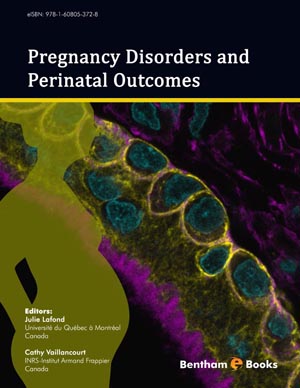Abstract
Hypertensive disorders of pregnancy, and particularly preeclampsia, remain a leading cause of adverse pregnancy outcomes in both developing and developed countries. Identification of at-risk women, before the emergence of clinical signs, in order to implement preventive measures and early targeted interventions for improving short-and long-term outcomes for the mother and her child, remains a public health priority. The development of validated screening procedures using biological markers is hampered by the limited knowledge of the aetiology and pathophysiology of preeclampsia, despite continuous research efforts. However, recently discovered biochemical markers and ultrasonographic parameters, taken individually or in combination, have shown encouraging potential to better characterize and predict preeclampsia and its adverse outcomes. We provide in this chapter examples of potential markers in relation to their links to pathophysiological processes. We believe there is a need to investigate in large-scale population studies combinations of carefully-selected biochemical, biophysical and maternal determinants to identify early in pregnancy women at risk of developing preeclampsia and its adverse outcomes.
Keywords: Markers, maternal hypertension, pregnancy, blood pressure, proteinuria, foetal






















